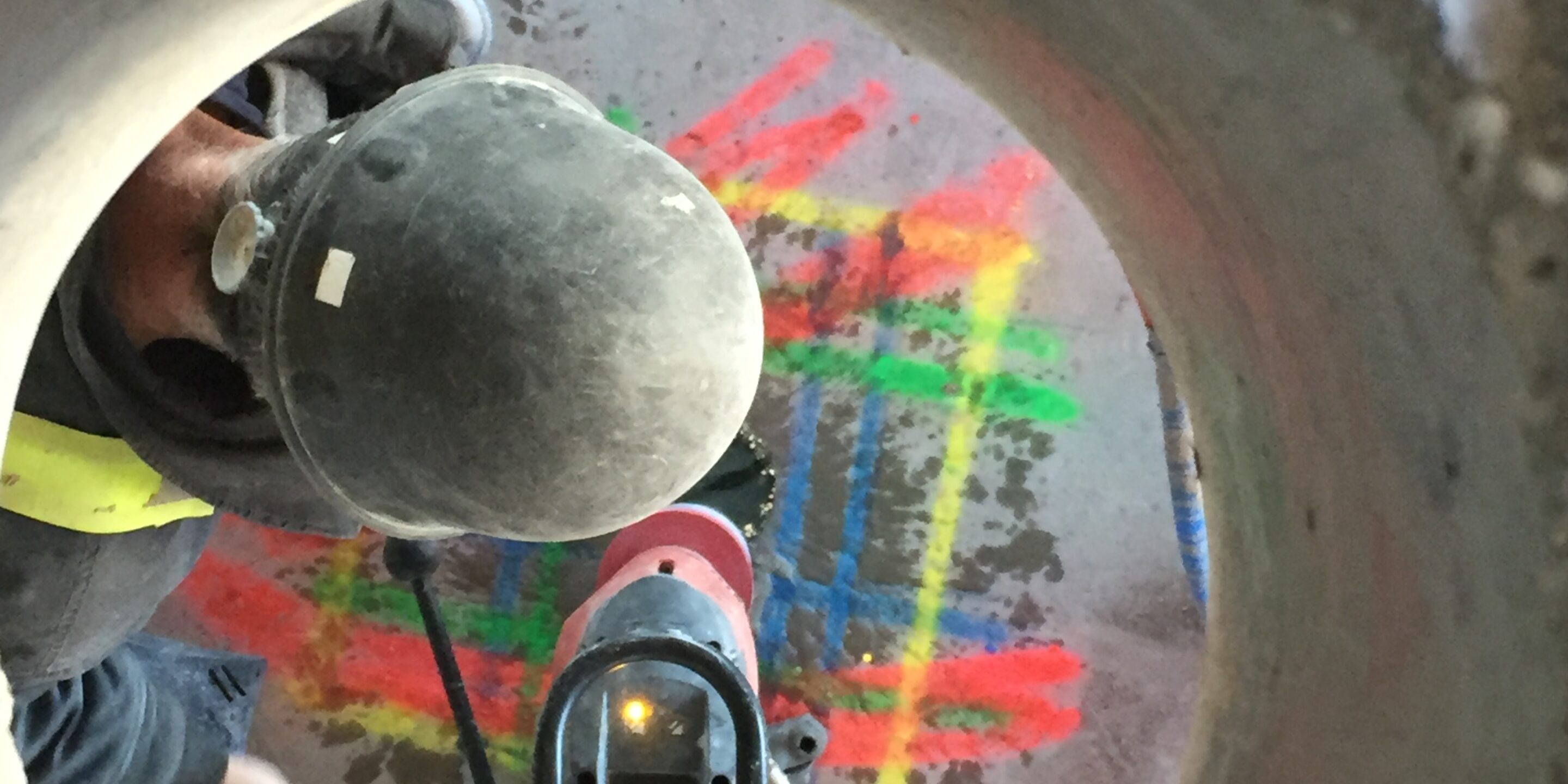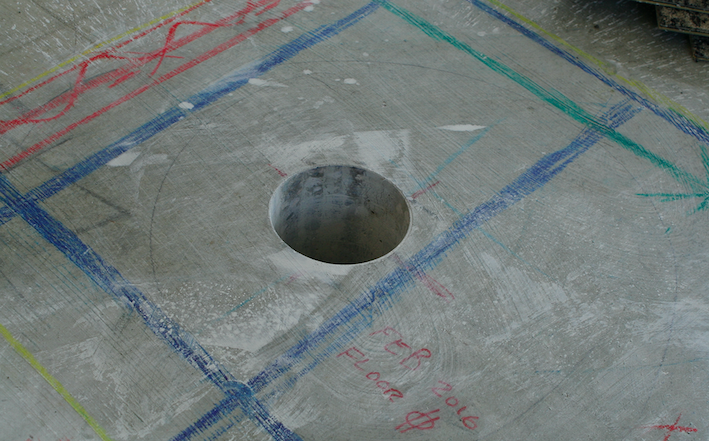Concrete core drilling (or concrete coring) is the process of removing a cylinder of concrete from the rest of the structure.
We offer concrete core drilling through one of our Partners – Xradar
What is concrete coring?
Concrete coring utilizes a diamond cutting drill to cut a perfect round hole in any concrete structure. The process is low-noise, dust free and non-percussive. It is by far the most popular choice when it comes to cutting concrete.
Holes can be drilled at any angle – whether vertical or horizontal, and a choice of electric or hydraulic rigs can be used for drilling in sensitive locations or confined spaces.
How does it work?
A concrete drilling tool is comprised of a diamond cutting end attached to a steel tube. In most cases the rig is attached to the floor or surface using an anchor, bolt, or vacuum seal in order to stabilize it.
As the rig drills the cutter is cooled by water in order to reduce friction. The cutting process is completed by the removal of the slug, leaving a perfect hole with no cosmetic damage or requirement for after care.
It is always important to scan the area prior to cutting to ensure that there is nothing in the way of the drill, such as rods or conduits. Xradar guarantee accuracy in their concrete scanning. To find out more about the guarantee head here, to get straight in touch with Xradar go here.
When is it used?
Coring is used on floors, walls and ceilings whenever there is a requirement for a hole.
There are many applications, but in general it is used for utility penetrations. It tends to be used in addition to a scan performed by our partner company Xradar.
Core holes are necessary for making way for water pipes, sewer lines, phone lines and computer lines.
It is also required for plumbing, electrical wiring, and heating, along with the creation of vaults and manholes.
If you are looking for concrete core drilling services, get in touch with Xradar today!


